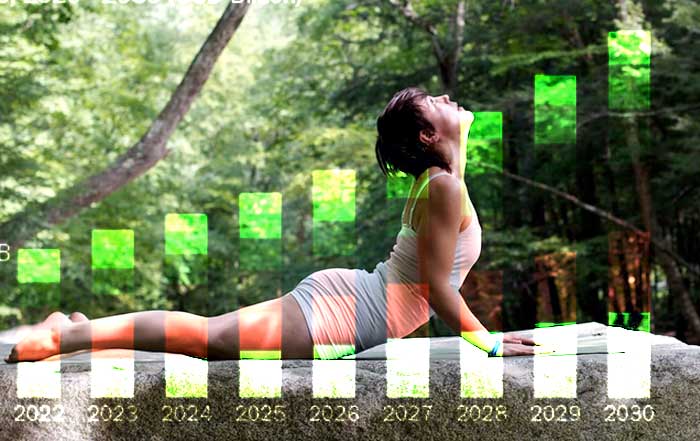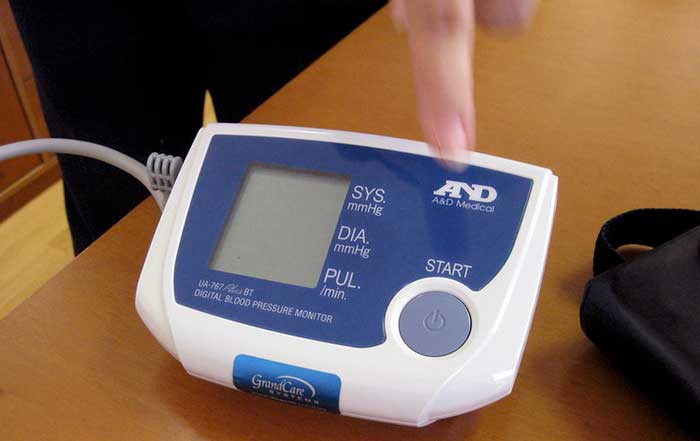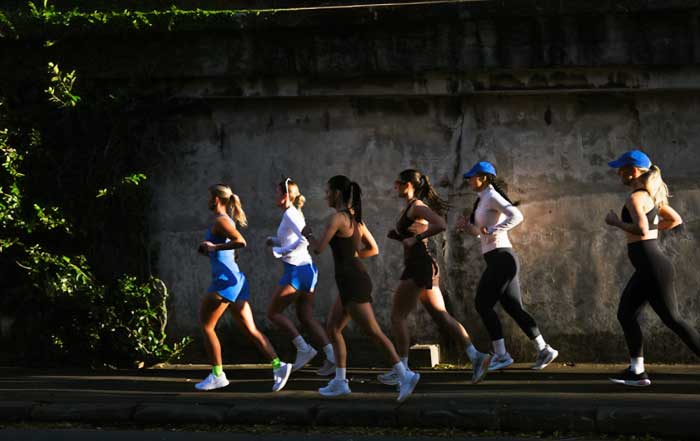The global wellness economy has entered a defining era of expansion, transformation, and convergence. What began as a fragmented niche around luxury spas, yoga studios, and self-care rituals has evolved into a multi-trillion-dollar ecosystem connecting technology, sustainability, and human longevity. So the wellness industry is not only reshaping consumer behavior but also influencing government policies, real estate development, digital innovation, and corporate strategy.
For Wellnewtime, a platform dedicated to wellness, fitness, health, lifestyle, environment, and business, this article explores the structural evolution of the global wellness economy, the scale of its current growth, and the forces defining its next decade of transformation.
Understanding the Scale of the Global Wellness Economy
The term “wellness” no longer describes a passing lifestyle trend; it has become a measurable and durable economic category. According to the Global Wellness Institute (GWI), the global wellness economy reached an estimated USD 6.3 trillion by the end of 2023 — equivalent to more than 6 percent of global GDP. Its trajectory points to an expected USD 9 trillion valuation by 2028, growing at a sustained annual rate of 7.3 percent.
This growth surpasses the global averages of GDP expansion and now places wellness ahead of several major industries such as technology, tourism, and sports. Sectors like personal care, fitness, mental health, and wellness tourism have fully rebounded beyond pre-pandemic levels, signaling a deeper shift in consumer consciousness toward proactive well-being.
In broader terms, Precedence Research projects the overall health and wellness market to reach USD 6.87 trillion in 2025 and expand toward USD 11 trillion by 2034, reflecting a compound annual growth rate of 5.4 percent.
This extraordinary scale underscores that wellness is no longer a subset of healthcare — it is a global economic driver influencing design, digitalization, food systems, work culture, and investment. Learn more about wellness innovation and its expanding role in everyday life.
The Sectoral Pillars of Global Wellness
Personal Care, Beauty, and Aesthetics
Personal care and beauty remain the largest component of the global wellness economy. In 2025, consumers increasingly associate skincare, anti-aging treatments, and beauty routines with holistic wellness rather than mere appearance. The clean beauty movement, sustainable packaging, and biotech-derived formulations are shaping a new frontier in aesthetics.
Major corporations such as L’Oréal, Unilever, and Estée Lauder continue to acquire or invest in wellness-oriented brands focused on natural ingredients, vegan formulations, and microbiome health. This transformation demonstrates how beauty and wellness now converge under the shared goal of preventive and regenerative self-care. Readers can explore deeper insights in Wellnewtime Beauty.
Healthy Eating, Nutrition, and Weight Management
Nutrition is central to preventive wellness. The rise of functional foods, plant-based alternatives, and personalized nutrition plans has redefined global diets. Studies indicate that more than 50 percent of consumers worldwide are increasing their intake of high-fiber foods, probiotics, and plant proteins, while new scientific interest in the gut-brain axis reinforces the link between diet and mental health.
The emergence of GLP-1-based anti-obesity medications, such as those from Novo Nordisk and Eli Lilly, has further reshaped the weight management market. However, consumers increasingly demand holistic solutions combining medical innovation with lifestyle guidance. The intersection of biotechnology, digital health, and mindful eating now represents one of the most dynamic areas in global wellness. Learn more about nutrition and wellness.
🌍 Global Wellness Economy Evolution
From niche luxury to USD 9 trillion by 2028 • Growing at 7.3% annually
Economic Milestone Achieved
Global wellness economy reaches USD 6.3 trillion, representing over 6% of global GDP.
Mental Wellness Priority
Mental wellness market surpasses USD 250 billion as emotional health becomes a vital productivity and longevity factor.
Wellness Tourism Expansion
Wellness tourism exceeds USD 900 billion with immersive experiences combining health optimization and sustainable travel.
Projected Market Leadership
Global wellness economy expected to reach USD 9 trillion, solidifying its position ahead of technology and tourism sectors.
Long-Term Vision
Health and wellness market projected to expand toward USD 11 trillion with a 5.4% CAGR, integrating AI, sustainability, and personalized care.
Fitness, Mind-Body, and Activity
The pandemic permanently transformed global fitness behavior. Digital workouts, connected wearables, and hybrid gym memberships are now integral to consumer lifestyles. In 2025, global gym memberships and wellness app subscriptions continue to rise, driven by on-demand fitness platforms such as Peloton, Les Mills +, and Apple Fitness+, alongside mindfulness tools like Headspace and Calm.
Wearables powered by AI and real-time biometric analytics personalize activity recommendations, transforming raw health data into meaningful behavioral insights. The convergence of AI coaching and mental wellness integration marks the next evolution of fitness culture — emphasizing emotional balance, recovery, and community alongside physical performance. For trends in global activity and movement, explore Wellnewtime Fitness.
Wellness Tourism and Travel
Wellness tourism has become a major engine of the wellness economy, combining health optimization with experiential travel. The sector is projected to exceed USD 900 billion in 2025 and expand beyond USD 1 trillion by 2027, according to multiple industry analyses.
Destinations like Thailand, Bali, Iceland, and Costa Rica are leading examples of how wellness tourism merges traditional healing, luxury hospitality, and sustainability. Travelers seek immersive experiences — forest bathing, digital detox retreats, longevity programs, and thermal spa rituals — as alternatives to conventional vacations.
The growing emphasis on regenerative tourism ensures that local cultures, ecosystems, and communities benefit from visitor spending. Wellness travel now forms part of a broader shift toward responsible global exploration. Discover stories of transformative destinations on Wellnewtime Travel and learn more from global wellness leaders such as Global Wellness Institute and World Travel & Tourism Council.
Spa, Thermal, and Mineral Springs
The global spa and thermal wellness sector is experiencing a resurgence. Valued at USD 124 billion in 2024, the market is expected to reach USD 173 billion by 2030, expanding at a steady 5.7 percent CAGR. Consumers increasingly prioritize recovery, touch therapy, and somatic treatments after years of digital overload.
Wellness destinations now integrate hydrotherapy, aromatherapy, and high-tech modalities such as cryotherapy, infrared sauna, and red-light rejuvenation. Therme Group and Six Senses are among the brands transforming spa experiences into multisensory environments combining architecture, science, and art.
Spa culture is particularly strong in Europe, where countries like Germany, Hungary, and Switzerland maintain deep traditions of thermal healing. Learn more about wellness and spa innovations on Wellnewtime Massage.
Wellness Real Estate
One of the fastest-growing sectors in the global wellness economy is wellness real estate, representing buildings and communities designed for physical and mental well-being. The market surpassed USD 540 billion in 2024 and is projected to exceed USD 1.1 trillion by 2029.
Developers worldwide are incorporating biophilic design, circadian lighting, indoor-outdoor integration, and air and water quality systems into residential and commercial spaces. The philosophy behind this trend recognizes that wellness begins with the spaces people inhabit.
Innovative projects in Singapore, Dubai, and Los Angeles illustrate how real estate, sustainability, and wellness are merging into a new model of urban development. The connection between environment and well-being is further explored in Wellnewtime Environment.
Workplace Wellness
As the future of work becomes hybrid and distributed, companies are investing heavily in wellness programs that enhance resilience, engagement, and retention. Corporate wellness platforms now offer digital health dashboards, stress-management workshops, and personalized health incentives.
According to Deloitte’s Global Human Capital Trends 2025 report, over 70 percent of surveyed companies consider employee well-being a top strategic priority. The modern workplace now integrates ergonomic design, wellness architecture, flexible hours, and mental health support as standard components of productivity.
The concept of the “well workplace” goes beyond HR — it’s a philosophy of designing healthier, more humane business ecosystems. Explore related insights in Wellnewtime Business.
Preventive and Personalized Health
The convergence of healthcare and wellness has accelerated dramatically. Preventive and personalized health now form a major pillar of the modern wellness economy. Consumers demand proactive interventions — genetic testing, biomarker monitoring, nutritional genomics, and AI-driven health guidance — long before illness arises.
Digital health companies like Oura, Whoop, Fitbit, and Garmin have expanded from tracking activity to predicting health trends, while clinical-grade diagnostics are entering consumer markets. The World Health Organization (WHO) has emphasized that preventive healthcare, including nutrition, movement, and emotional well-being, is key to reducing chronic disease and healthcare costs.
Emerging health-tech platforms, some powered by OpenAI and Google Health, are embedding AI agents to interpret biosignals and suggest evidence-based lifestyle adjustments. This is redefining how individuals manage health outcomes in real time. Learn more about innovation in health and wellness and the rise of digital health ecosystems shaping personalized well-being.
Mental Wellness and Emotional Resilience
Mental wellness has transitioned from taboo to priority. After years of pandemic-induced isolation, economic uncertainty, and digital saturation, societies worldwide are recognizing emotional health as a vital aspect of productivity and longevity.
The global mental wellness market surpassed USD 250 billion in 2024, encompassing therapy, mindfulness, mental health apps, and workplace wellness initiatives. Meditation, journaling, and mindfulness practices are now integrated into educational and corporate systems.
Platforms like Headspace Health, Calm, and BetterHelp are broadening access to guided therapy and stress management, while neuroscientific tools measure brain waves and optimize mental focus. As evidence-based approaches expand, emotional fitness becomes as measurable as physical endurance. Readers can find expert perspectives and mindfulness practices on Wellnewtime Mindfulness.
Complementary and Traditional Medicine
Complementary and traditional healing systems continue to contribute to the diversity of global wellness. Modalities like Ayurveda, Traditional Chinese Medicine (TCM), acupuncture, and naturopathy are witnessing renewed global attention, blending centuries-old wisdom with modern research validation.
India’s export of Ayurvedic wellness tourism, China’s TCM innovation zones, and Japan’s forest therapy programs show how ancient traditions can support modern science. Integrative medicine centers in Singapore, Germany, and California now combine diagnostics with herbal and mind-body therapies, catering to a global audience that values both technology and nature.
This harmonization of East and West reflects a maturing understanding of holistic wellness — one that balances intuition, evidence, and culture.
Regional Dynamics of the Expanding Wellness Economy
The global wellness industry is unevenly distributed but universally aspirational. Regional characteristics — income levels, demographics, policy frameworks, and cultural preferences — influence how wellness is expressed, commercialized, and experienced.
North America
North America remains the world’s largest wellness market, estimated at more than USD 2 trillion. The United States leads in fitness technology, wellness real estate, and corporate wellness programs. American consumers prioritize convenience, digital integration, and performance metrics — turning health into a lifestyle subscription.
Companies like Peloton, Therabody, WHOOP, and Lululemon dominate the landscape, while wellness retreats in California, Arizona, and Hawaii blend luxury hospitality with preventive health. Canada, meanwhile, focuses on sustainability, outdoor wellness, and community health initiatives.
The region’s integration of AI, telemedicine, and personalized health platforms shows how wellness and healthcare are merging into one continuous experience. Read related perspectives in Wellnewtime Health.
Europe
Europe combines deep heritage with modern innovation. Nations such as Germany, Switzerland, Austria, and Hungary have long anchored wellness culture through thermal spas and nature-based healing. The European Union’s “Green Deal” initiatives encourage cities to invest in public wellness spaces, cleaner transportation, and sustainable tourism.
The United Kingdom and France have also seen rapid growth in wellness real estate and mental health integration within corporate frameworks. Meanwhile, Scandinavia is redefining minimalism and mental clarity through outdoor activities, saunas, and cold-water therapies — positioning wellness as a public right, not a luxury.
The European model emphasizes accessibility and regulation, ensuring wellness products meet high quality and safety standards. Learn more about sustainable living in Wellnewtime Environment.
Asia-Pacific
Asia-Pacific is the fastest-growing wellness region globally, reflecting rising middle-class incomes, digitalization, and a strong foundation in traditional practices. China’s massive consumer base fuels spending on beauty, digital fitness, and nutrition, while India leverages its ancient heritage in Ayurveda and yoga to attract international wellness tourists.
Japan continues to blend longevity science with cultural rituals such as “onsen bathing” and “shinrin-yoku” (forest bathing). South Korea’s K-wellness trend integrates skincare, mindfulness, and tech-driven self-optimization, while Singapore invests in precision health and wellness architecture.
Tourism powerhouses like Thailand, Vietnam, and Indonesia — particularly Bali — attract millions seeking authentic retreats, detox programs, and nature immersion. Asia-Pacific’s rise confirms that wellness is both cultural and commercial, connecting heritage with modern aspiration.
For those interested in regional travel and rejuvenation experiences, explore Wellnewtime Travel.
Middle East and Africa
The Middle East is rapidly building world-class wellness infrastructure. Countries such as Saudi Arabia, UAE, and Qatar are investing heavily in wellness cities, longevity clinics, and environmental retreats aligned with national “Vision 2030” goals. Dubai has emerged as a global hub for medical and wellness tourism, combining luxury with innovation.
In Africa, wellness ecosystems are developing around local culture, biodiversity, and affordability. South Africa, Morocco, and Kenya are pioneering sustainable spa resorts and eco-lodges that merge traditional healing with conservation. Wellness real estate projects in Mauritius and Cape Town show that health and design can coexist with environmental stewardship.
While the African market remains smaller in size, its potential for inclusive, community-centered wellness makes it one of the most promising growth frontiers.
Latin America and the Caribbean
Latin America’s wellness economy is rooted in nature, culture, and community. Countries like Costa Rica, Mexico, Brazil, and Colombia lead in eco-tourism, plant-based medicine, and wellness retreats that emphasize biodiversity and social responsibility.
Wellness real estate projects in Costa Rica’s Nicoya Peninsula and Mexico’s Riviera Nayarit are attracting global investors seeking sustainable development. The Caribbean, with its spa resorts and thermal springs, is diversifying tourism to emphasize longevity and rejuvenation.
As climate-conscious travel grows, Latin America’s fusion of nature, culture, and wellness positions it as a central player in the next wave of sustainable wellness tourism.
Key Global Trends Defining the Future of Wellness
Wellness as Daily Infrastructure
In 2025, wellness is no longer an occasional indulgence but an integrated daily practice. Consumers engage in micro-routines that optimize sleep, hydration, posture, and emotional balance throughout the day. Smart homes, office spaces, and vehicles are incorporating bioadaptive lighting, air purification, and ergonomic design to support ongoing well-being.
Wellness has become an infrastructural element — embedded in real estate, mobility, and design. This transformation marks a shift from passive consumption to proactive living, where individuals expect every environment to contribute to health. Learn more about modern lifestyle integration in Wellnewtime Lifestyle.
Digital Wellness and AI Integration
The adoption of AI-driven tools is reshaping how individuals monitor and improve well-being. From wearable sensors to AI assistants interpreting heart rate variability and stress levels, the personalization of wellness has entered a new phase.
The arrival of generative AI in wellness — seen in companies such as Hume, Eternum Labs, and Longevity.ai — enables adaptive coaching based on real-time biometrics. Personalized recommendations now cover nutrition, exercise, and mental health support.
However, this rapid digitization raises ethical questions about privacy, data governance, and algorithmic transparency. Platforms that prioritize user consent, evidence-based results, and inclusivity will shape the trusted wellness technology landscape of the future.
To explore wellness innovation trends, visit Wellnewtime Innovation or global resources such as World Economic Forum and McKinsey & Company.
A Defining Decade for Global Wellness
The global wellness market in 2025 stands as one of the defining movements of the modern era. What was once dismissed as a luxury for the privileged few has now become a cornerstone of global development and a reflection of humanity’s collective desire for balance, longevity, and purpose. The numbers alone tell a story of extraordinary expansion — but behind every dollar and data point lies a shift in consciousness. People are seeking more than health; they are seeking harmony between mind, body, community, and environment.
This transformation has turned wellness into a unifying force across borders and disciplines. Governments now treat well-being as an economic priority, integrating health-promoting infrastructure into urban planning and education. Businesses are reimagining workspaces to enhance focus, creativity, and mental resilience. Architects design buildings that breathe and adapt to circadian rhythms, while environmental innovators develop materials that nurture both human and planetary health. Wellness has evolved into a framework for progress, a system that measures prosperity not merely in income or output but in quality of life and emotional equilibrium.
Digital technology and artificial intelligence have accelerated this transformation, making wellness accessible, measurable, and personalized. From AI-driven nutrition guidance to smart wearables that predict stress levels, innovation has redefined how individuals engage with their own biology. Yet amid these advances, the essence of wellness remains profoundly human — rooted in empathy, self-awareness, and connection. The most successful wellness initiatives are not those that sell perfection but those that cultivate understanding, teaching people how to live more consciously and compassionately in an increasingly complex world.
The wellness economy’s rise also demands moral and ecological responsibility. Growth without integrity risks hollowing out the very values wellness seeks to uphold. As brands and governments race to meet surging demand, transparency, inclusion, and sustainability must guide every decision. The most visionary wellness leaders are those who recognize that healing the planet and uplifting communities are inseparable from personal well-being. True wellness is circular: it regenerates, gives back, and sustains life across generations.
For Wellnewtime, this evolution presents an unparalleled opportunity to lead with purpose and integrity. By bridging data and storytelling, science and soul, the platform can continue to illuminate how wellness shapes not only individual lives but the architecture of societies. Each article, interview, and insight can help readers see that wellness is not an indulgence but a shared responsibility — a language that connects business, health, environment, and technology into one cohesive narrative of progress.
As the world confronts unprecedented environmental, economic, and mental health challenges, the wellness movement offers both a compass and a lifeline. It reminds societies that progress is hollow without well-being, that innovation must coexist with compassion, and that prosperity means little if humanity loses its equilibrium. The next decade will test whether wellness can sustain its promise — to empower individuals, inspire leaders, and unite the world around the pursuit of healthier, more conscious living.
Wellness, at its best, is not a market trend but a moral evolution. It is the art of caring for oneself in a way that uplifts others. It is a declaration that human flourishing, planetary balance, and ethical innovation belong together. In this defining decade, wellness has become more than an economy — it has become the world’s new measure of hope.










